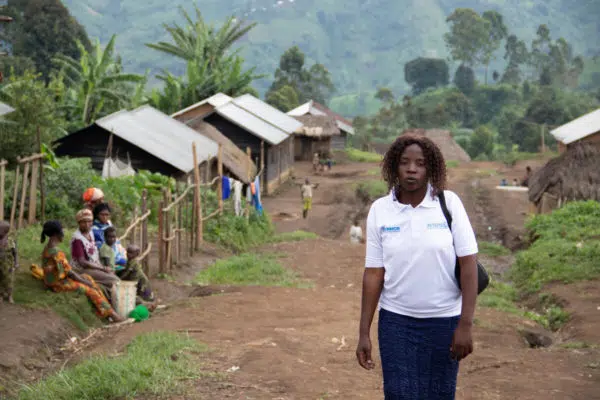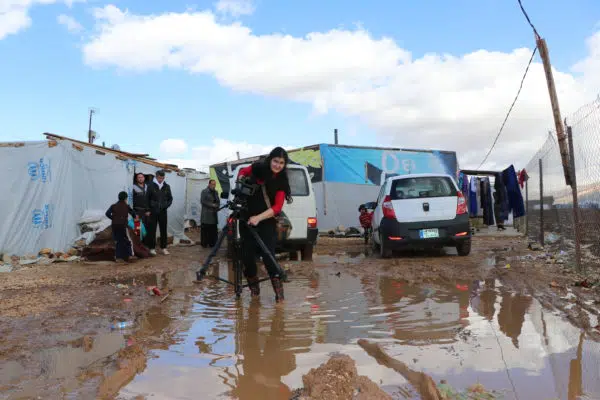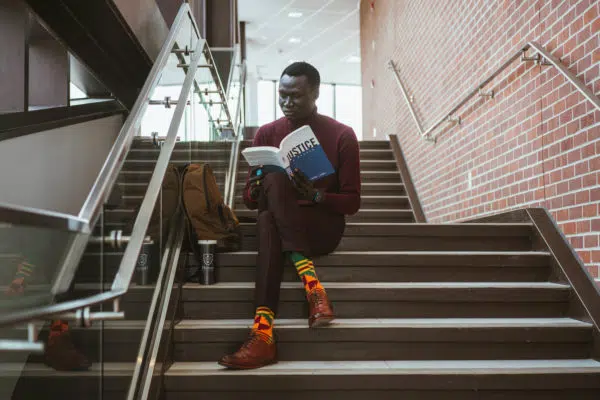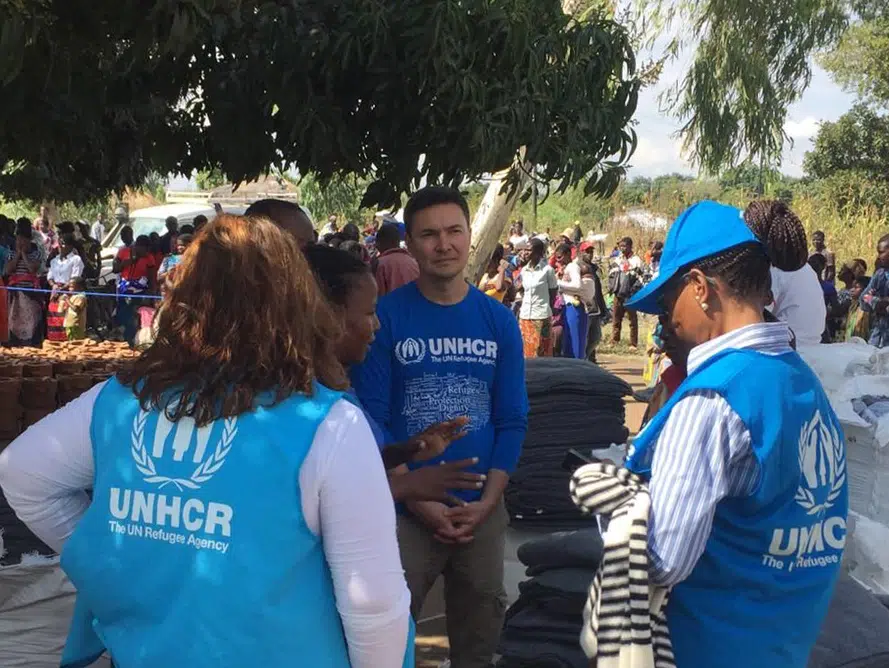
Myrat Myradov (centre) assisting in Core Relief Items (CRI) distribution to internally displaced persons in Malawi as a part of the 2019 UNHCR Idai Cyclone Response. ©UNHCR
On #WorldHumanitarianDay, meet Canadian humanitarian worker Myrat Myradov who has served in the world’s biggest emergencies with UNHCR
Blog by Myrat Myradov, Head of UNHCR Belize National Office
Belize, 19 August 2022 — It has been almost 22 years since I began my career as a humanitarian worker with the United Nations Refugee Agency (UNHCR) — what a journey it has been!
As a student of international law in my home country Turkmenistan in Central Asia, and the only one who spoke English in class, the university dean asked me to read and prepare questions for a lecture on refugee law that the UNHCR’s Representative to Turkmenistan gave.
During the lecture and the discussions that followed, I was immediately drawn to the Agency’s mandate to aid and protect forcibly displaced communities, including refugees, internally displaced persons (IDPs), stateless persons, and returnees. Before that day, I hadn’t thought about pursuing a career in humanitarian work – fate helped me find my life calling.
After graduation, I joined UNHCR in Turkmenistan as a protection clerk. For the next three years, I worked with refugees from Afghanistan, Iran, and Iraq, from reception and counselling to referrals for assistance and eventually resettlement submissions to Canada.
Working as a protection clerk was the first time I felt I could change lives. In three years, UNHCR Turkmenistan obtained citizenship for more than 14,000 Tajik refugees of Turkmen origin who lived in uncertainty for over a decade after fleeing Tajikistan’s civil war in the 1990s. At this point, I knew I needed to learn more about refugee protection. I went on to pursue a master’s degree in the UK, majoring in refugee law, before returning to UNHCR to serve in Ukraine, Kazakhstan and Ethiopia.
While I have never been an asylum seeker or a refugee by conventional definitions of the terms, I no longer had a home to go back to later in the years. Due to political restrictions, I could not return to Turkmenistan and became de-facto stateless. Through my past work with refugees and Canada widely considered a safe haven, I knew it was the right country to immigrate to with my wife and two-year-old daughter.
“We were Canadians the minute we landed in Calgary back in 2010.”
Canada welcomed us with open arms. We were ready to start our new lives and felt we were home right away. We were Canadians the minute we landed in Calgary back in 2010. My sense of privilege and luck made me work even harder to serve refugees because I know how different the circumstances are worldwide. I know the long and arduous journeys many must make — the language challenges, the restrictions on education and work possibilities, and the xenophobia.
We encountered few obstacles because our new home and its people supported us. Whenever I return home from complex missions in Africa, the Middle East and elsewhere, at the port entry in Canada, I am greeted by border service agents – “Welcome Home.”
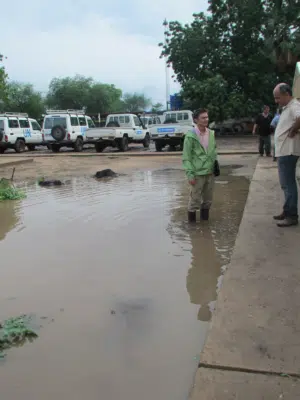
UNHCR office during the rainy season in Maban, South Sudan as part of the 2012 South Sudan Refugee Emergency Response. ©UNHCR
Since then, I worked with UNHCR in some of the world’s largest emergencies. My UNHCR journey has taken me to South Sudan, where two other colleagues and I stood in an empty, muddy wasteland half the size of New Brunswick, welcoming refugees crossing the border with nothing but the clothes on their backs.
“We grew the team to over 150 members, working with 25 partner organizations on the ground — a village of humanitarian workers.”
People were arriving, having walked for days without food or water, many carrying their dead children in their hands. There was so much suffering, and our work conditions were incredibly challenging. But in two years, we turned the area into four fully equipped camps hosting more than 120,000 refugees. We built roads, schools, and an airstrip to receive humanitarian assistance. We grew the team to over 150 members, working with 25 partner organizations on the ground — a village of humanitarian workers.
While humanitarian work is very fulfilling, it also comes with many personal challenges. In South Sudan, I travelled back and forth to Calgary every six weeks to see my family on what the United Nations calls a five-day rest and recuperation leave — given to staff members working in dangerous and difficult duty stations. I got malaria twice while on duty.
We had no internet connection, and I could barely talk to my family back home. This time was long before the days of instant messaging and video calls. My toddler back home refused to eat, play or sleep until her daddy came home.
And then, it was the Syrian conflict, which remains the biggest refugee crisis in the world. I was posted to Jordan, where we assisted Syrian refugees living in camps and within the urban community. In Jordan, I also worked as part of the largest resettlement unit globally.
We submitted an average of 15,000 refugees per year for resettlement to over 15 countries, including Canada, which has been a global leader in refugee resettlement for three years. I worked on complementary pathways, including family reunification, education opportunities, humanitarian visas and labour mobility, which support the relocation of skilled refugees.
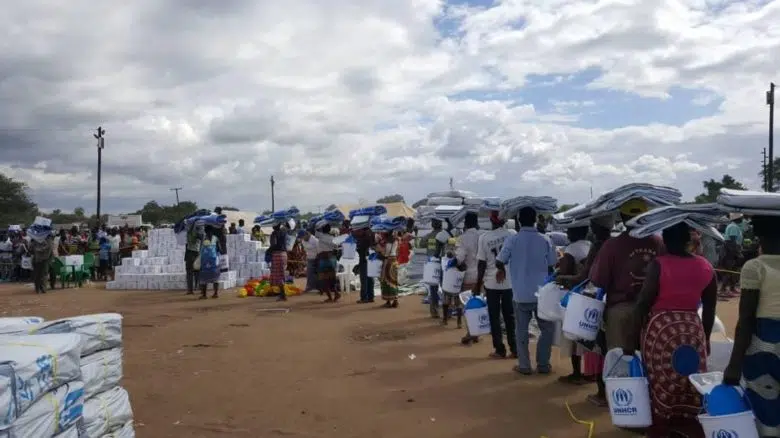
CRI distribution in Malawi as a part of the 2019 UNHCR Idai Cyclone Response. ©UNHCR
From Jordan, I was posted to Malawi, a region where floods and food insecurity were rampant. And then to Yemen, a massive humanitarian crisis of over five million IDPs. I continued my work in protection, focusing on joint coordination with other UN Agencies and partners on IDP protection, gender-based violence, child protection and mine action.
Afterwards, I went to Trinidad and Tobago, working with Venezuelan refugees. Then to Iran in the wake of the Afghan crisis, all while COVID-19 restrictions made it hard to travel back and forth to see my family.
I moved to Belize in April 2022, where I now head the national office. We’re currently working on obtaining amnesty for over 7,000 persons of concern to secure permanent residency and eventual citizenship — an example of how refugees can be integrated into society and positively contribute to it.
My UNHCR journey has taken me around the world and taught me that humanitarian work is not easy. It’s not for everyone. You have to be passionate about it, not consider it another job. You must uphold your responsibility to aid and protect refugees while balancing your family life. On top of that, it can get tough when you need to take care of your health in the most challenging conditions to carry on with your mission.
“From humanitarian assistance… to resettlement and other complementary pathways programmes that allow refugees to safely rebuild their lives again — our work is truly lifesaving.”
It has also shown me firsthand the impact of our work on the ground. From humanitarian assistance that ensures forcibly displaced people have access to their most basic needs to resettlement and other complementary pathways programmes that allow refugees to safely rebuild their lives again — our work is truly lifesaving.
But there’s nothing more heartbreaking than when you can’t help people because of a lack of funding or resettlement spots. As a Canadian, I am proud of our partnership with Canada, which is one of UNHCR’s top donors globally and a reliable partner and leader in finding long-term solutions for refugees.
In 2021 alone, Canada welcomed more than 20,400 people. That’s 20,400 lives changed. Canada has also shown significant commitment to complementary pathways and strengthening of asylum systems in the Americas, alongside unwavering advocacy and support. We cannot continue to have generations of refugees — the world must come together and find long-term, sustainable solutions.
#ItTakesaVillage to help those in need, and I’m proud to be a part of that village.



